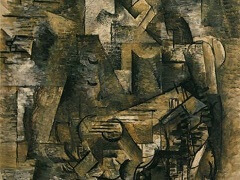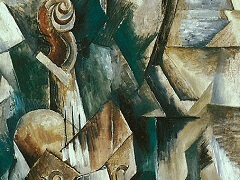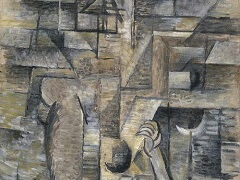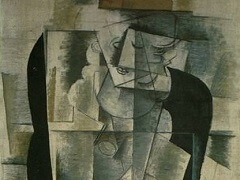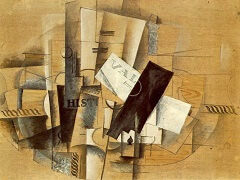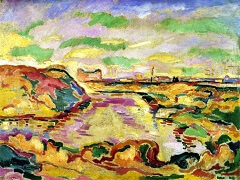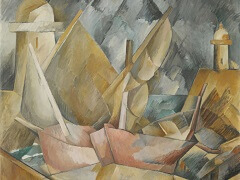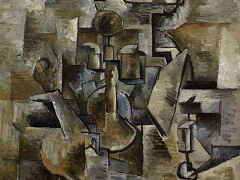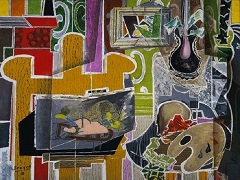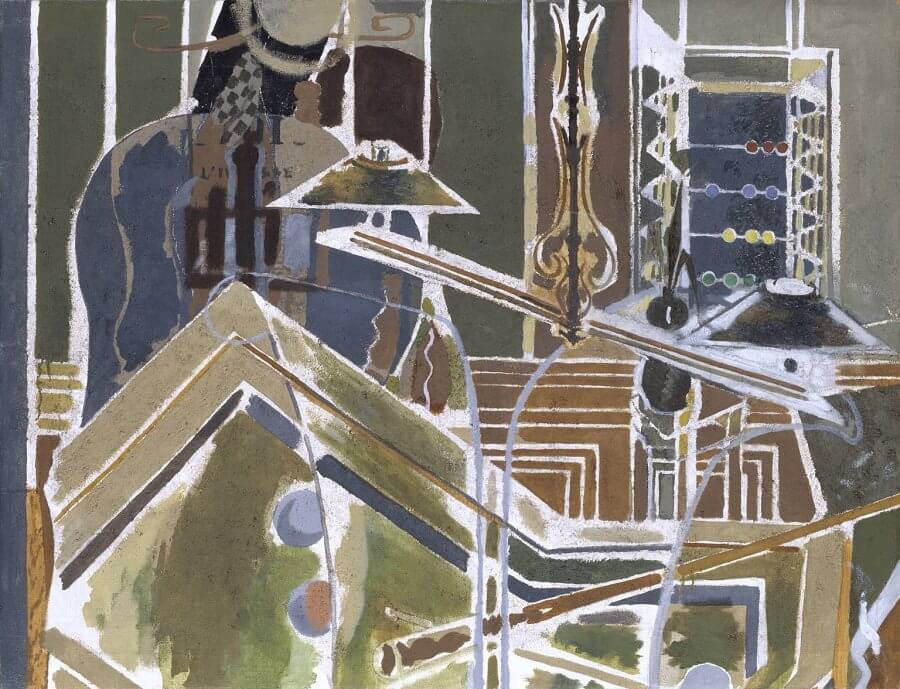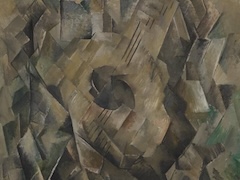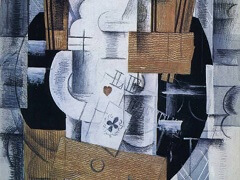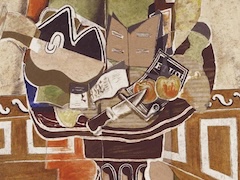Vase, Palette, and Mandolin, 1936, by Georges Braque
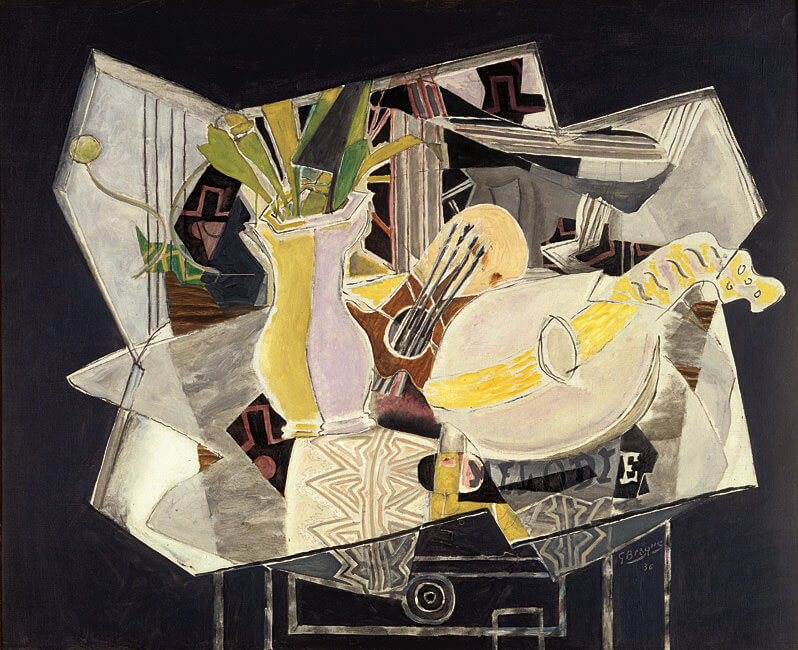
Vase, Palette, and Mandolin, 1936 embodies the dynamic and energetic qualities of Analytic Cubism, a revolutionary artistic style pioneered by Georges Braque and Picasso to depict three-dimensional objects on a flat canvas without the use of traditional Renaissance perspective. In this conceptual approach to painting, perceived forms are broken down, fractured, flattened, and then reconstructed in multiple-point perspective within a shallow space. Braque described this kind of fragmentation as "a technique for getting closer to the object."
Here, still-life props (some recognizable and some impossible to identify) are clustered toward the center of a gridlike armature. Braque united the objects and the background by opening up and covering over the boundaries of the black-outlined objects, and by using the same earth-toned colors for the entire painting. He transformed volumes in the still life to accommodate their multiple surfaces on a flat plane, thereby allowing the viewer to see more of the form than would be possible from a single vantage point.
Vase, Palette, and Mandolin is now a collection of San Francisco Museum of Modern Art

